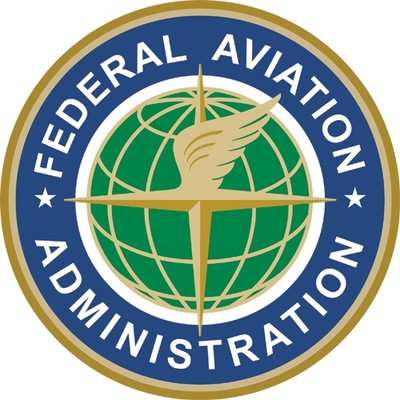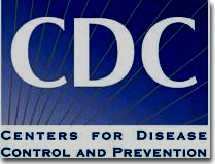Offers Guidance On Training For Flight Crews During Outbreak
In an effort to protect the health and welfare of flight crews, the FAA says it is working closely with the Centers for Disease Control and Prevention (CDC), the aviation industry, as well as other Federal government partners on issues of public health and on disease awareness. The agency is currently focused on the Ebola outbreak in which at least one case has appeared in the United States.

According to the agency, decisions about flight restrictions in response to an international public health emergency would be an interagency decision. The health and welfare of flight crews, airline workers and the traveling public is a priority of the FAA. We work closely with the Centers for Disease Control and Prevention (CDC), as well as other federal government partners on issues of public health and on communicable disease awareness, when appropriate.
While the FAA has the authority to direct flight operations in United States airspace, any decision to restrict flights between the United States and other countries due to public health and disease concerns would be an interagency decision that would engage the Departments of Health and Human Services/CDC, State, Homeland Security, and Transportation. The World Health Organization (WHO) and the CDC have not recommended general travel restrictions to or from the countries affected by Ebola.
The FAA is says it is working with the CDC which has developed guidance for airline crews, cleaning and cargo personnel, and air medical transport. The CDC’s notices and guidelines are well publicized. U.S. airlines have CDC’s guidance and have been sharing the information with their crews. The FAA will continue to work collaboratively with the U.S. aviation industry and public health authorities.
U.S. Customs and Border Protection (CBP) and the CDC have closely coordinated to develop policies, procedures, and protocols to identify travelers that are known by U.S. public health officials to have a communicable disease and to handle in a manner that minimizes risk to the public. These procedures have been utilized collaboratively by both agencies on a number of occasions with positive results.
CBP personnel review all travelers entering the United States for general overt signs of illnesses (visual observation, questioning, and notification of CDC as appropriate) at all U.S. ports of entry, including all federal inspection services areas at U.S. airports that service international flights. When a traveler is identified with a possible communicable disease or identified from information that is received from the CDC, CBP personnel will take the appropriate safety measures by donning personal protective equipment (PPE), to include gloves and surgical masks, which are readily available for use in the course of their duties. CBP personnel receive training in illness recognition, but if they identify an individual believed to be infected, CBP will contact CDC along with local public health authorities to help with further medical evaluation.

The CDC, through a network of Quarantine Stations located at 20 ports of entry and land-border crossings, has routine health inspection procedures that consist of working with airline, cargo ship, and cruise ship companies to protect passengers and crews from certain infectious diseases. Quarantine inspectors meet arriving aircraft and ships reporting ill passengers and/or crew (as defined in the foreign quarantine regulations) and assist them in getting appropriate medical treatment. If the flight crew of a commercial aircraft ARRIVING in the U.S. becomes aware of an ill person on board which may include a person with Ebola symptoms, the captain is REQUIRED by law (42 CFR 71.21(b)) to report the illness to the nearest U.S. Quarantine Station, who will arrange the appropriate medical response at the flight’s destination airport. International Civil Aviation Organization (ICAO) standards and procedures provide for reports to be made to air traffic control. Once the FAA receives a report, it
promptly communicates it to the CDC Emergency Operations Center (EOC).
Information on U.S. Quarantine Stations is available online, with major quarantine stations located in Anchorage, Atlanta, Boston, Chicago, Dallas, Detroit, El Paso, Honolulu, Houston, Los Angeles, Miami, Minneapolis-St. Paul, New York (JFK), Newark, Philadelphia, San Diego, San Francisco, San Juan, Seattle, and Washington, DC.
The FAA has an agreement in place with CDC that outlines how the FAA and CDC will exchange notifications of reports that they receive of deaths, suspected cases of communicable disease, and other public health risks onboard aircraft. The FAA notifies the CDC Emergency Operations Center of any of these reports received by FAA Air Traffic Services units. There are ICAO provisions regarding the use of Air Traffic Service units to facilitate communications between airborne flights and public health authorities.
Guidance on training and procedures for the aviation industry are provided by the CDC, which is also the best source for studies and reports on infectious disease.
 Aero-News: Quote of the Day (12.11.25)
Aero-News: Quote of the Day (12.11.25) ANN's Daily Aero-Term (12.11.25): Nonradar Arrival
ANN's Daily Aero-Term (12.11.25): Nonradar Arrival Classic Aero-TV: David Uhl and the Lofty Art of Aircraft Portraiture
Classic Aero-TV: David Uhl and the Lofty Art of Aircraft Portraiture Airborne-NextGen 12.09.25: Amazon Crash, China Rocket Accident, UAV Black Hawk
Airborne-NextGen 12.09.25: Amazon Crash, China Rocket Accident, UAV Black Hawk Airborne 12.05.25: Thunderbird Ejects, Lost Air india 737, Dynon Update
Airborne 12.05.25: Thunderbird Ejects, Lost Air india 737, Dynon Update




